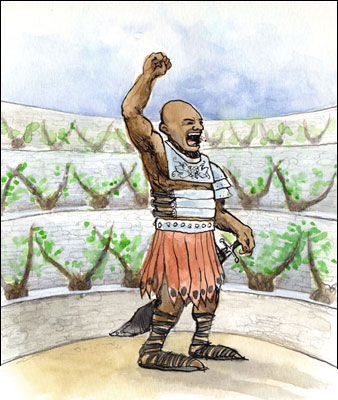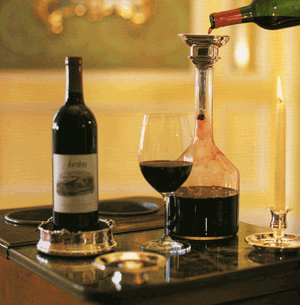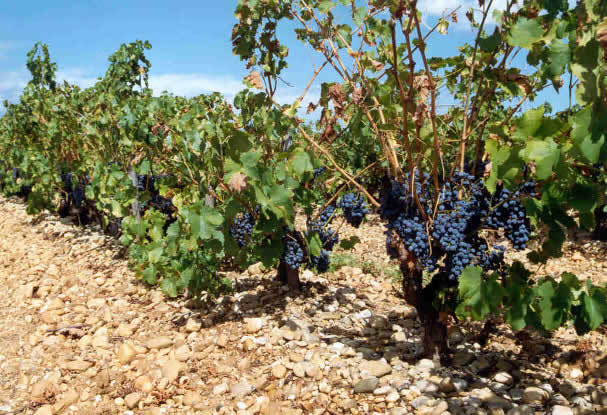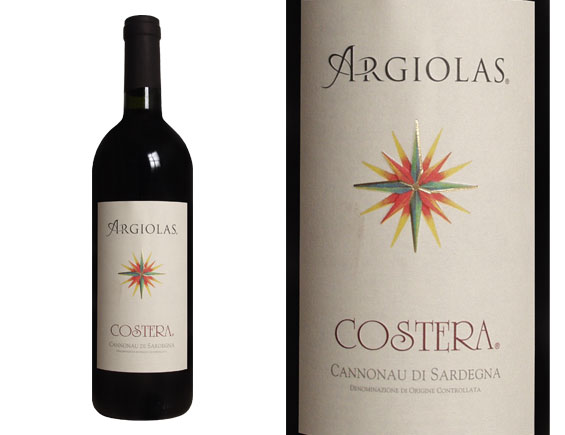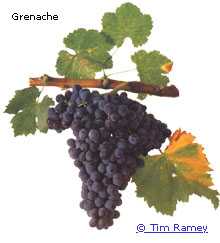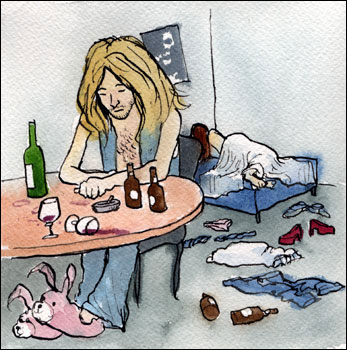 The Great California Grenache Tasting
The Great California Grenache TastingIt’s been said by Steve Tanzer that Bordeaux ages on its tannin, Burgundy on its acid and Chateauneuf…its alcohol. Well when speaking Chateauneuf, one must talk Grenache, a grape not loaded w/ tannin and certainly not known for acidity, leaving its singular structural virtue firmly in the booze category. Well, while we didn’t taste Chateauneuf last night, but we definitely felt the affects of Grenache’s gregarious persona as there was nary a sober body to be found. If you ever want to put together an evening that is sure to bring even the highest of alcoholic tolerances to their knees, the great delicious, heady grape from the Southern Rhone seems to knock ‘em dead on just about every occasion.
All apologies for the digression, as the theme of the tasting was not ’15.5%+ alcoholic behemoths,’ it was great Californian Grenache, an entity that isn’t exactly on the pulse of high fashion in terms of varietal domestic recognition, but one that really revs up my juices for the Golden State. I find that the producers of Grenache that I’ve interacted w/ have a genuine sense of drive and passion for the grape that infectiously spreads across the region, inflicting pockets of growers with ‘Grenache fever.’ While Pinot Noir has gotten its due press and Hollywood fame for its finicky, high maintenance behaviors, Grenache may have a case for being the pickiest of all grape varieties to have achieved Californian success. When you couple its physiological vulnerabilities alongside an imbedded inferiority complex and you’ve got yourself a perfect storm to create, what I hope to be, the next best thing to come from west coast soils.
While still an infant in terms of experience as a Californian varietal wine, the strides that these young, energetic mavericks have made from vintage to vintage is evident in their wines. Discussions last night regarding early drinkability, aging curves and evolutionary potential amongst these wines was fascinating, albeit an evidence-less dialogue. As most producers that we sampled have just recently come onto the scene, they have generated excitement over a vintage or two, not via lengthy resumes and expansive track records. When you consider how successful these Rhone Ranger pioneers have been w/ Grenache over the period of a couple years, utilizing plant materials that are scarcely a baker’s dozen years old at best, I can only imagine how rich the potential is for this grape variety in California in the decades to come.
We began the evening w/ a couple aloof examples of rose, fashioned from Grenache grapes. They proved to offer up somewhat of an unconventional beginning to our alcohol soaked evening, but hey, conventional tastings are boring!
Gran Feudo Rose, Navarra 2007
What a fuzzy, hot and disjointed mess this was! Ambiguously scented and caustically textured, this awkward science project of a wine hit the dump bucket faster than you could say ‘bitch slap,’ 64 points.
Benziger Grenache Rose, Dragonsleaf Vineyard, 2007
Now there is no doubting the heavy concentration of Benziger haters at the table, but c’mon, a single vineyard rose from California is certainly novel enough to be palatable, right? Dubbed as a ‘step up from White Zinfandel,’ I actually found this to be quite a lively, Sauvignon Blanc-esque example of decent, quaffable rose. Tropical, citrus inflicted notes of passion fruit, freshly soaked herbs and spicy briar fill out the perfumey, somewhat fresh rose that is by no means seamless, but full of character, 82 points.
Now it’s time for the real juice…
Rudius Grenache, 2005
Jeff Ames did a commendable job on his inaugural vintage Syrah, and this Grenache is by no means playing second fiddle to its more illustrious partner in grape. A sweet, fragrant expression of fresh raspberry, strawberry preserve and peppered huckleberry fan out nicely on the palate to a sappy, licorice tinged mouthfeel that has all the poise and presence you’d hope for in this varietal. While the first bottle of Rudius Grenache that I tasted a couple weeks back exhibited a bit more of a savory note, it received the exact same score and demonstrated the same type of craftsmanship, 90 points.
Outpost, Howell Mountain Grenache, 2005
I tasted the ’04 w/ Ben Sherwin blind a few months back and have very similar impressions on their ’05, all talk and no action. Perhaps the best nose of the evening, as flirty an

d exotic an aroma one could hope for in any dry red wine, full of citrus hints manifested in orange peel, white pepper, chamomile tea and sweet cherry perfume that I could smell for days. Having said that, it is hollow and clipped on the palate as it lacks density and concentration, but still tends to woo me with its elegant character nonetheless, 86 points.
*As an aside, I believe Ben stands firm on his position believing it is simply too young, and he may very well be correct. It is tough for me to make that leap, as this was their 2nd or 3rd vintage and I simply don’t have enough data points to determine whether or not this wine will ever fill out. We will have to make an appointment in the future to revisit this issue. You’re my boy Sherwin!
McPrice Myers L’Ange Rouge Grenache, 2005
It is no secret that I have absolutely been floored by this wine time and time again, and this is undoubtedly an effort that I am willing to bet the ranch on. I will expand on my analysis when I get into the Sine Qua Non note, but for now I’ll just remind you all that this Grenache can still be found for less than 30 dollars and is what I believe to be the best deal in California. Deep, dark ruby shades pave the way for the massive, gushing performance of sweet kirsch liqueur, bittersweet cocoa and fruit cake notes that have an expansive, yet harnessed personality through the sappy finish. I absolutely love this ‘fruit bomb done perfectly’ and know that the best is yet to come as is there is just so much flesh covering some really fascinating elements, 95 points.
Koehler Santa Ynez Grenache, 2005
I am not exactly sure where Koehler sources their fruit (as McPrice and Herman Story utilize Larner and Colson Canyon) but Santa Ynez seems to be the hotspot for the grape in the Central Coast and this effort from ’05 was surprisingly savory, with loam, dry aged beef, black tea and plum sauce notes that have an allure and complexity that is unfortunately cut short by a detracting, unpleasant bitterness on the finish. I am not entirely familiar w/ this producer but I believe once they fine tune their fruit a bit more they’ll have a real winner on their hands, 87 points.
Booker Vineyard, the Ripper, 2005
This 90 percent Grenache and 10 percent Syrah blend is the first vintage from Booker and has already become sought after thanks to small production and flamboyant praise from Robert Parker. The winemaker is Eric Jensen, whom previously worked w/ Justin Smith at Saxum for 5 years, and I hate to say it, but if I had tasted this wine blind I would have pegged it as a Grenache made by Mollydooker. Now the board’s wrath for Sparky aside, I don’t necessarily consider that a bad thing, although it isn’t a great thing either. The colors are black as the sky on a moonless night and the intensity and concentration of fruit are absolutely staggering. There are shades of clotted cream, sweet vanilla bean, cassis pudding and fig cake notes that have all the calories and nutrition of a protein infused milk shake. With all its monstrous power, there is a lithe sensibility within the texture that prevents the wine from being ponderous, as well as reminding you that it isn’t a Syrah and is in fact a Grenache. Definitely not for everybody, but I admit, it did seduce me a bit, 91+ points.
Core, Saroyan Vineyard, 2005
Apparently this vineyard no longer exists, or at least, the Grenache aspect of the vineyard has been uprooted. Now that makes this note extremely bittersweet (especially if the vines were uprooted to plant lettuce patches, or worse, Merlot) as this was a true ringer for a baby Chateauneuf. Purity was at the forefront of this effort, with notions of shaved truffle, graphite, spicebox, kirsch liqueur and raspberry ganache leading the way to an elegant, yet deeply constituted palate that glided along a gorgeous mineral beam to the finish. Perhaps the lightest in color of all the Grenaches we tasted, but the one that stole all our hearts, bravo, 93+ points.
Herman Story Grenache, Larner Vineyard 2005
Not sure if it was darker than the Booker, but I am sure that was a more focused and channeled effort (at least at this stage of its life). While I am not a fan of barrel aging for Grenache, Russell From pulls it off as this wine is far from oaky, but has this beautiful toasted almond note that adds another dimension. Perhaps his success can be attributed to having muscular enough fruit to handle to wood load, as he seems to be able to pull off handling this grape ‘differently’ better than most. While the wine is loaded w/ tar, violet, blackberry reduction and cassis notes, there is a finesse that parallels the wine’s sinew that really sets it apart, 93 points.
Sine Qua Non, Lil’ E, 2003
Alright, Josh Leader is responsible for breaking my SQN cherry and I am eternally grateful! I know this type of tasting isn’t exactly Josh’s thing, but I was very glad he came and hope he had as much fun as I did. Anyhow, this is a texturally superlative wine, just about as plush, seamless and polished as any Grenache I’ve ever tasted, w/ a sensual beam of pure vanilla extract, raspberry and macerated cherries effortlessly gliding along to an effortless finish. Manfred handles his wines in a distinct fashion from the norm and there is no doubting his success, but I have to say that tasting the ’05 McPrice Myers whispers in my ear that he’s going to have some company at the top of the Rhone pedestal (besides John Alban, of course). This expression of SQN is drinking as well as you could hope for; but if you give the McPrice a couple more years and find that it hits this type of textural stride (while holding its alcohol), then we’ll have quite the interesting story to tell, 95 points.
PAX Dry Stack Vineyard, 2004
This Grenache is 100 percent whole cluster fermented on its native yeast and never racked before bottling, (god I love how ambitious and risk-taking these producers are!) and is aromatically loaded w/ a hypnotic perfume of melted licorice, blue flowers, anise, hickory wood and pure kirsch notes that are as seductive as any femme fatale I’ve encountered. Initially the attack is creamy and rich, but the midpalate shuts down like a jackhammer and tightens up on the finish which is cut and abrupt. There is so much potential in this effort, but it seems to me that at present, the wine just doesn’t close the deal, 90+ points?
Broc Cellars Dry Stack

Vineyard, 2005
In a head to head vineyard battle, the Broc Cellars currently has the upper hand to the much more expensive PAX, as its violet, framboise, sappy cola and blackberry sauce notes have a seamless, multi-dimensional and impeccably textured progression from start to finish. As the wine sits in the glass, this beautiful notion of black forest cake appears and beautifully glides along a pure silky robe that I can still remember as I type these notes, 92+ points.
Leo Frokic’s blind ringer…
There was no doubting that this was a Grenache dominated blend, but it varied in its texture quite dramatically from the Californian versions. Quite spicy at first, w/ black currant and cassis notes dominating the nose but they turn tarry in the palate, where a bittersweet cocoa note pumps along powdery, graphite laced tannins. The structure of this wine is much more evident and it is by no means a fruit bomb, but could likely benefit from some short term cellaring, 91 points.
My guess was Monsant…I was close, it was actually an ’05 Priorat from Mas Perinet (I swore it was too restrained to be a Priorat!).









